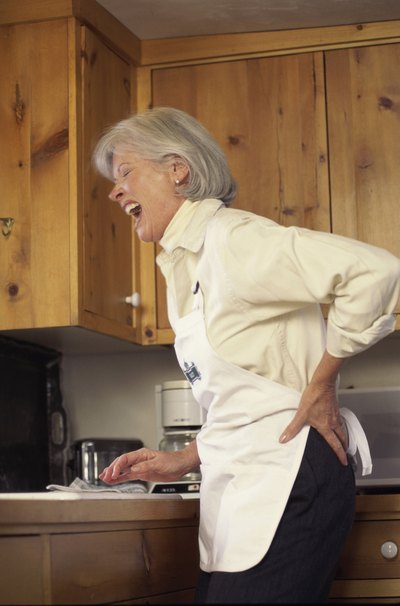Author
by
https://www.livestrong.com/article/317568-exercises-that-relieve-back-pain-from-a-herniated-disc/
by
A herniated disc is a condition in which a disc between the vertebrae in the spine ruptures and compresses a spinal nerve. It is also commonly referred to as a slipped or ruptured disc.This can cause pain, numbness and tingling in the back or legs, depending on the location of the herniation. Herniated discs are initially treated with rest, muscle relaxers, nonsteroidal anti-inflammatory medications and physical therapy. Fortunately, most individuals are able to recover with these conservative measures alone.
Benefits of Exercise
Stretching and strengthening exercises are an integral component of recovery from a herniated disc. Stretching exercises help to relieve pain and prevent the muscles in your back from becoming stiff. Strengthening exercises are done to develop the muscles in your back, which in turn stabilizes the spine, pushes the disc back into place and prevents the disc from herniating in the future.
Stretching Exercises
Before you begin exercising, warm-up for several minutes to loosen your muscles. Gentle, low impact aerobic exercises like walking or swimming are best to minimize pain and decrease the risk of re-injury. After you are properly warmed up, you can progress to stretching the back. Some of these stretches may include the standing back extension, prone back push-up, “superman,” kneeling back flexion, prone knee to chest, hamstring and supine piriformis stretch.
Strengthening Exercises
Strengthening exercises should be done after completing your stretches. These may include the prone knee twist, straight leg raise, standing lateral bend, arm circle, standing lumbar rotation and abdominal crunch.
Timeframe
More than 95 percent of patients recover within six weeks, according to the Mayfield Clinic and Spine Institute. If you are still experiencing numbness, tingling or pain after six weeks of conservative treatment, contact your doctor. You may need to have surgery to repair the disc.
Considerations
Consult your doctor before beginning any exercise routine. While these exercises may be done at home, they are best performed under the guidance of a physical therapist. A physical therapist will be able to design a specific exercise routine for your condition, as well as do massage, ultrasound, traction and electrical muscle stimulation to further facilitate recovery.
Warning
See your doctor immediately if you have bowel or bladder incontinence; bowel or bladder retention; numbness or tingling of the buttocks, inside of the thighs or between the legs; weakness of the legs; or difficulty walking. These are signs of a serious condition called cauda equina syndrome, which is a medical emergency requiring immediate surgery. Cauda equina can be caused by a herniated disc of the distal spine that compresses the cauda equina nerve root.
Prevention
Several simple measures can help prevent a herniated disc. One is to lose weight if you are overweight. The more weight you carry around your abdomen, the greater the pressure put on your back and discs, and the greater the risk for developing a herniated disc. Another key measure is to quit smoking, as this is a risk factor for degenerative disc disease. Also, learn proper posture and lifting techniques. Lifting from your back instead of your legs can put undue stress on the discs and back muscles. Likewise, incorrect posture can weaken the discs. Finally, do abdominal and back strengthening exercises regularly to help stabilize your spine.
https://www.livestrong.com/article/317568-exercises-that-relieve-back-pain-from-a-herniated-disc/







No comments:
Post a Comment